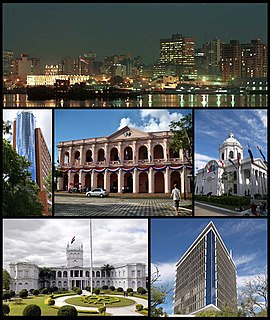
The Little Dumbbell Nebula, also known as Messier 76, NGC 650/651, the Barbell Nebula, or the Cork Nebula, is a planetary nebula in the constellation Perseus. It was discovered by Pierre Méchain in 1780 and included in Charles Messier's catalog of comet-like objects as number 76. It was first recognised as a planetary nebula in 1918 by the astronomer Heber Doust Curtis. However, there is some contention to this claim, as Isaac Roberts in 1891 did suggest that M76 might be similar to the Ring Nebula (M57), being instead as seen from the side view. The structure is now classed as a bipolar planetary nebula (BPNe).
Distance to M76 is currently estimated as 780 parsecs or 2,500 light years, making the average dimensions about 0.378 pc. across.

The Vander Veer Botanical Park is a 33-acre (130,000 m2) botanical garden in the Vander Veer Park Historic District of Davenport, Iowa. It is believed to be one of the first botanical parks west of the Mississippi River. The park was listed on the Davenport Register of Historic Properties on August 4, 1993.
57 Aquilae is a double star in the constellation of Aquila. 57 Aquilae is its Flamsteed designation. The primary star has an apparent visual magnitude of 5.70, while the secondary is magnitude 6.48. The pair have an angular separation of 35.624 arcseconds and probably form a wide binary star system. The estimated distance of the first component is 480 light-years, while the second is at 510 light-years. However, the margin of errors for their respective distance estimates overlap, indicating a probability that they are actually located much closer to each other. Both stars are massive, B-type main sequence stars with rapid rotation rates.
Victoria Park was a railway station near Victoria Park, east London, that was on the North London Railway (NLR) between Homerton and Old Ford. The station was situated on the north-east corner of the park, near Wick Road. It opened in June 1856, six years after the opening of the track to the NLR's original terminus at Bow, and two years after the opening of a spur line linking it to the Eastern Counties Railway (ECR) line at Stratford. The original station on the north side of Wick Road was replaced in March 1866 by a larger station at the junction itself to the south of the road, to cope with increased passenger numbers.

Piroplasmida is an order of parasites in the phylum Apicomplexa. They divide by binary fission and as sporozoan parasites they possess sexual and asexual phases. They include the tick parasites Babesia and Theileria.
Eta1 Doradus, Latinized from η1 Doradus, is the Bayer designation for an A-type main sequence star in the constellation of Dorado, around 330 light-years from the Earth. It has an apparent visual magnitude of approximately 5.697. It has a radius of 3.1 solar radii, and a luminosity of 56 suns. This star will be observed to be circumpolar south of latitude 24°S.

Patch is a neighborhood of St. Louis, Missouri. The Patch neighborhood forms the southern tip of the Carondelet neighborhood. It is defined by Robert Avenue on the north, the City Limits to the south, Alabama Avenue to the west, and by the Mississippi river to the east.

Calango District is one of sixteen districts of the province Cañete in Peru.
Cahuapanas District is one of six districts of the province Datem del Marañón in Peru.
HD 82205 is a double star in the southern constellation of Antlia. However, the primary is most likely a solitary star as the other component is deemed a line of sight companion. This is a giant star with a stellar classification of K3III.
HD 24480 is a double star in the northern constellation of Camelopardalis. The brighter component is a giant star with a stellar classification of K4III and an apparent magnitude of 5.20. The pair have an angular separation of 1.71″.
ψ Cygni, Latinised as Psi Cygni, is a triple star system in the constellation called Cygnus. With a combined apparent visual magnitude of 4.92, it is visible to the naked eye. As of 2002, the inner pair, components Aa and Ab, had an angular separation of 0.10 arc seconds along a position angle of 77.6°. Their combined visual magnitude is 5.05. Relative to this pair, the third member of the system, magnitude 7.61 component B, had an angular separation of 2.87 arc seconds along a position angle of 175.6° as of 2010. Based upon an annual parallax shift of 11.59 mas, Psi Cygni is located around 281 light years from the Sun.

The 1997 Manyi earthquake (玛尼地震) occurred on November 8 at 10:02 UTC. The epicenter was in Nagqu Prefecture (那曲地區) in northern Tibet, China. The focal mechanism indicates a lift-lateral strike-slip movement. This earthquake had a surface rupture of 17 km (11 mi) long with up to 7 m (23 ft) of left-lateral slip along the Manyi fault, a westward continuation of the Kunlun fault, offset about 100 km (62 mi) to the south. Normally, the continental crust is about 35 km (22 mi) thick, but it reaches 70 km (43 mi) thick under the Tibetan Plateau. This earthquake ruptured up to 20 km (12 mi) of the top part of the local continental crust.

Emeis Park and Golf Course is a 210-acre (0.85 km2) park located on the west side of Davenport, Iowa, United States. The park features picnic shelters, playground equipment, ball fields, basketball courts, tennis courts and a golf course. It is the western terminus for the Duck Creek Parkway.
Quicentro Sur is a shopping mall located south of Quito that opened in August 2010, and is the largest commercial center in Quito and Ecuador. It features 350 shops and 3,000 parking spaces, an entertainment area, a food court, 10 cinema screens, a large plaza for events, and an ice rink in a construction area of 165,000 square meters over a total area of 10 hectares.
Sigma Ceti is the Bayer designation for a star in the equatorial constellation of Cetus. With an apparent visual magnitude of 4.78, it can be seen with the naked eye on a dark night. Based upon an annual parallax shift of 37.46 mas, it lies at an estimated distance of 87.1 light years from the Sun. It is a probable astrometric binary star system.
Delta Coronae Australis, is a star located in the constellation Corona Australis. Located around 179 light-years distant, it shines with a luminosity approximately 53 times that of the Sun and has a surface temperature of 4801 K. It is an orange giant of spectral type K1III that is around 1.64 times as massive as the Sun.

Omega Orionis is a star in the constellation Orion. Its apparent magnitude is 4.57 and is located approximately 1,400 light years from our solar system. It is surrounded by a cloud of dust, forming a modest reflection nebula over a light-year wide.

HD 172910 is a class B2.5V star in the constellation Sagittarius. Its apparent magnitude is 4.87 and it is approximately 467 light years away based on parallax.

NGC 3783 is a barred spiral galaxy located about 135 million light years away in the constellation Centaurus. It is inclined by an angle of 23° to the line of sight from the Earth along a position angle of about 163°. The morphological classification of SBa indicates a bar structure across the center (B) and tightly-wound spiral arms (a). Although not shown by this classification, observers note the galaxy has a luminous inner ring surrounding the bar structure. The bright compact nucleus is active and categorized as a Seyfert 1 type. This nucleus is a strong source of X-ray emission and undergoes variations in emission across the electromagnetic spectrum.












